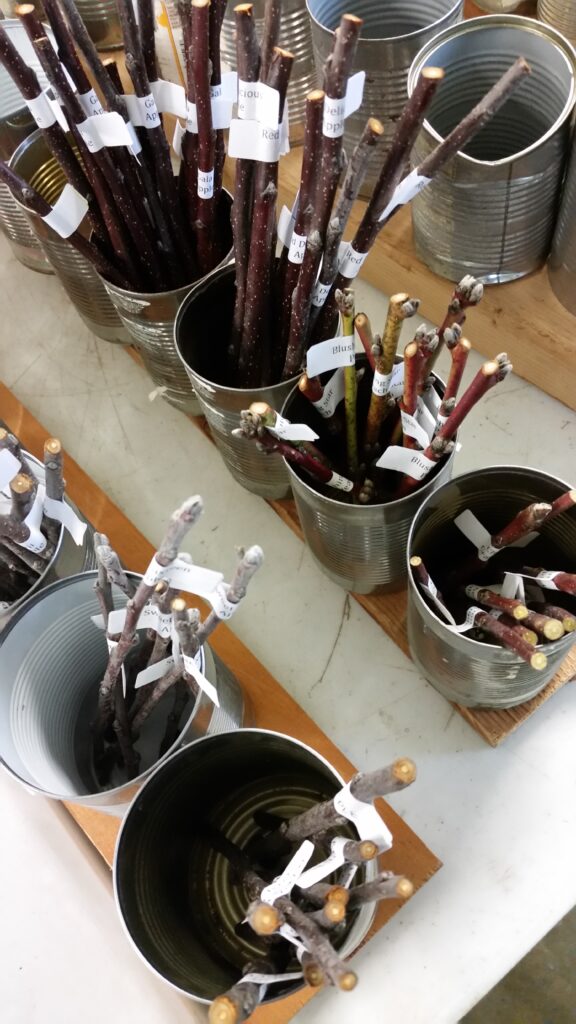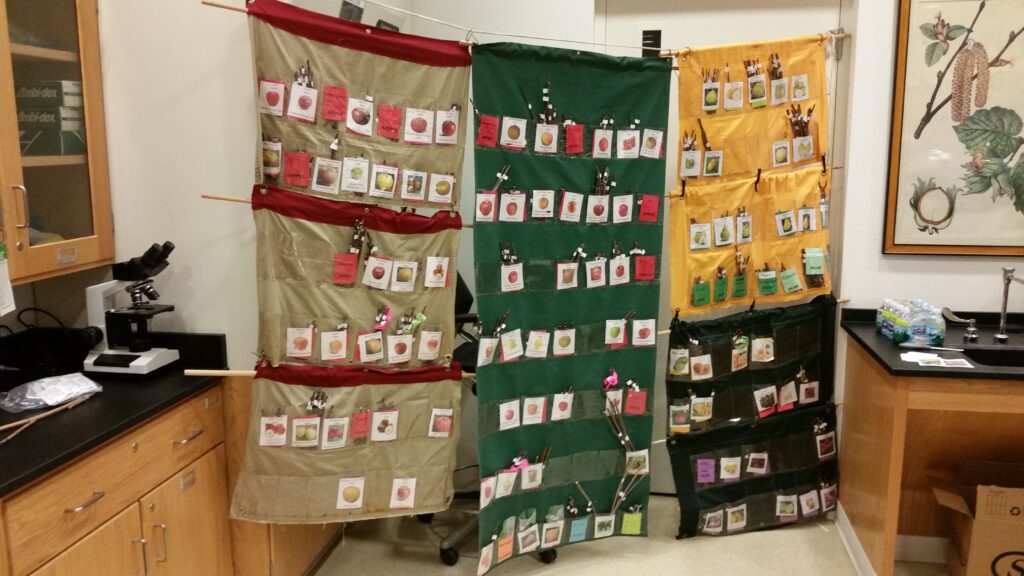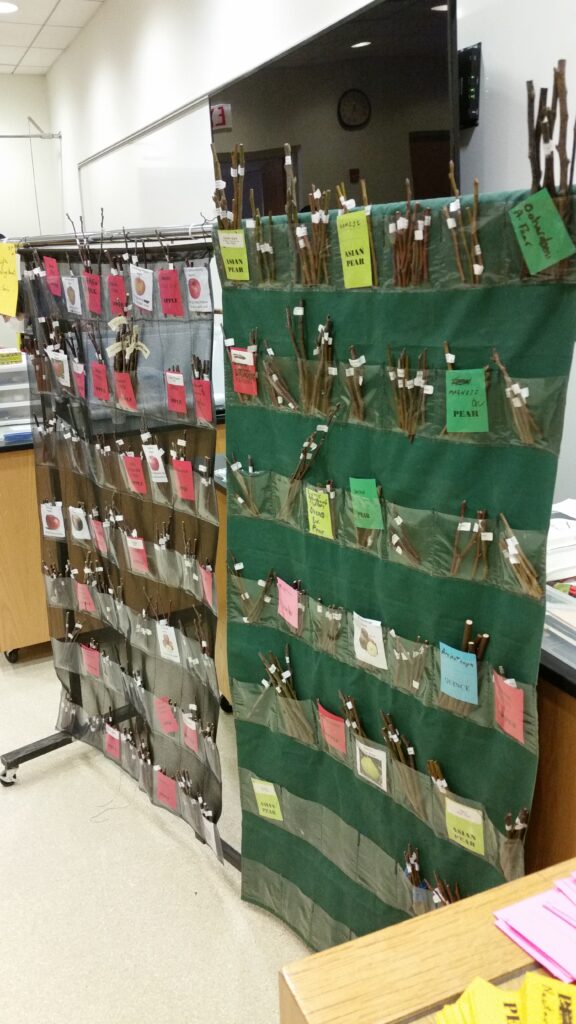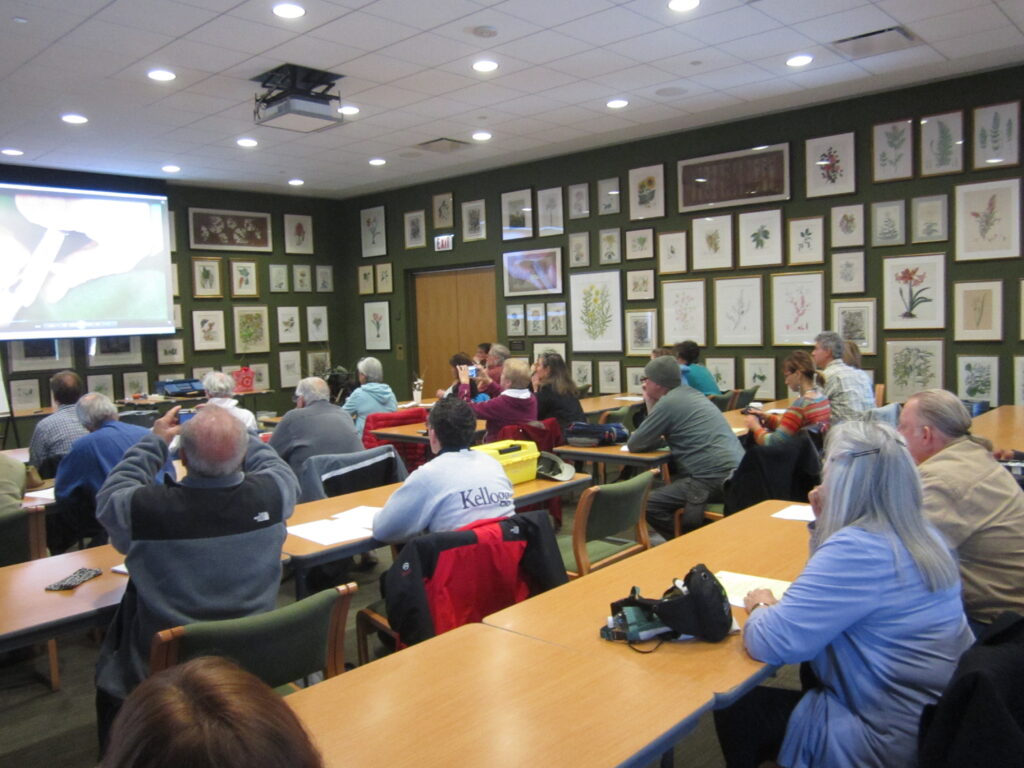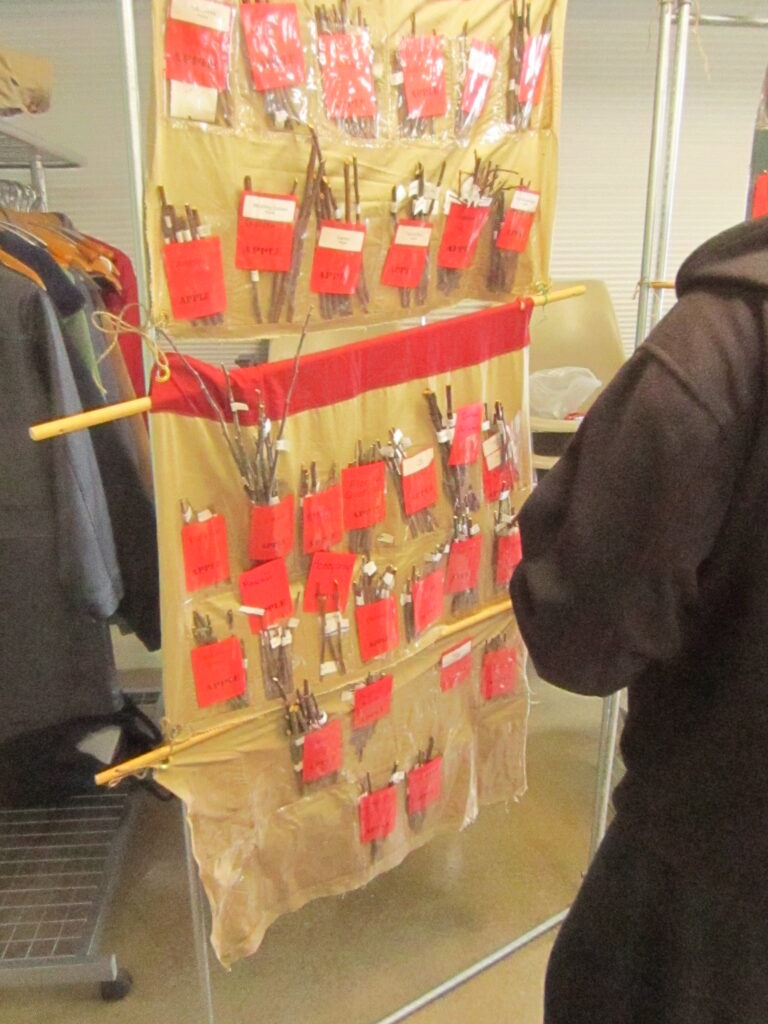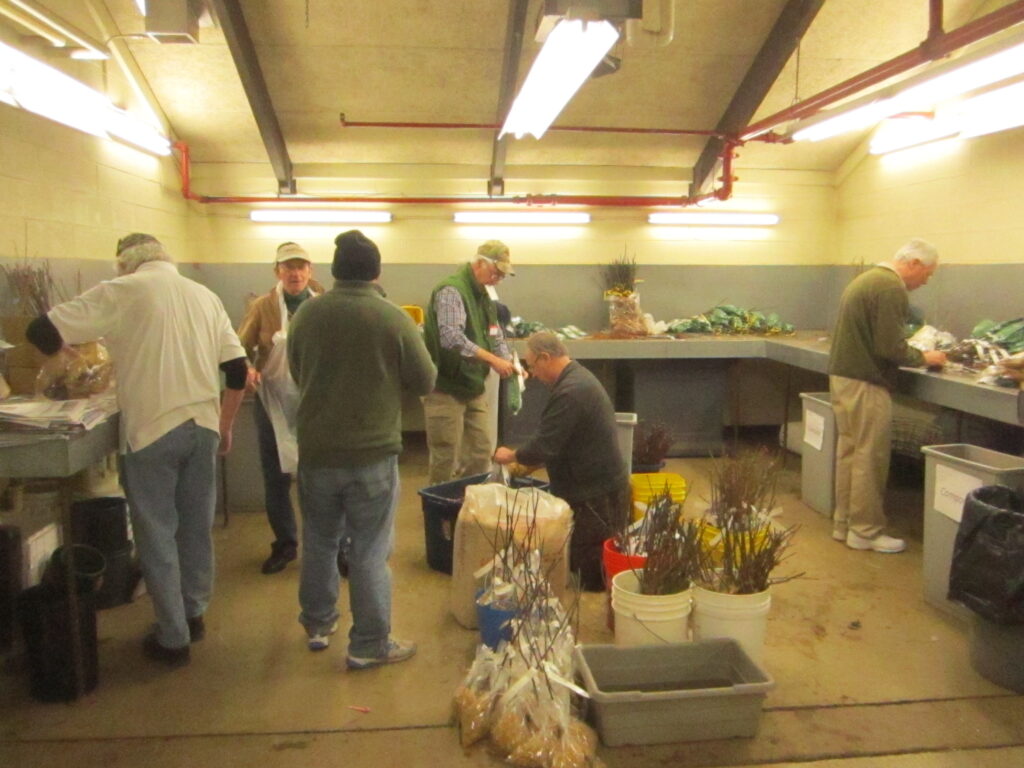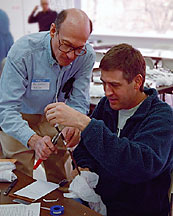
Would you like to learn how to create your own fruit trees? Would you like to create a tree that grows more than one variety of fruit? MidFEx will teach you how to graft! Grafting is a method of combining compatible plants to form a new plant. MidFEx conducts annual grafting workshops in March at the Chicago Botanic Garden where you can learn how to graft.
Be sure and review the MidFex video demonstrations on grafting and there is a list of other resources below. Club members benefit from direct access to experienced grafters at all club events, discounted costs for rootstock and the club’s online forum to answer their questions.
Check HERE for details on the 2025 workshop, it is March 23, 2025.
For more than 30 years MidFEx has been presenting grafting workshops in the Chicagoland area. It’s where our more experienced members pass on their knowledge of grafting fruit trees, free of charge, to beginning grafters or just the curious public.
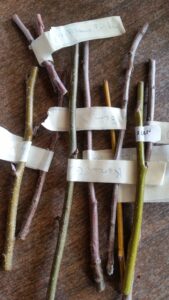
Grafting is an ancient method of producing a tree whose fruit will be identical (genetically) to its parents. Join us at our grafting workshop and create your own apple, pear or plum tree. This is definitely a hands-on workshop. You can buy rootstock at our workshop, follow along with the demonstration, and leave with one or more fruit trees ready to plant in the ground.
Our afternoon session includes a lecture-demonstration, followed by a practice session and individual help with grafting. Unique to this event is the large selection of member donated scion wood on hand, usually from at least 40 different varieties of apples, 10 varieties of pears, and 10 varieties of plums.
Costs: Our workshop and guidance are free. You are welcome to come and learn how to graft without any cost. For those that want to take home a tree, we will have several dwarfing rootstock types for sale as well as member donated scion wood of their choice. Grafting requires a very sharp knife with a 2-3 inch blade. Grafting knives will be available to purchase for those that don’t bring a knife or who find that their knife isn’t up to the task.
Important: Regretfully, space is limited. Only the individuals actually grafting fruit trees will be allowed in the grafting classroom. Friends, spouses, and children are welcome to explore the grounds during the sessions.
Additional Information on Grafting
- See our reference lists for mail order sources for rootstock and/or scion wood;
- our MidFex grafting video demonstrations;
- Cornell University cleft grafting document;
- Cornell University Whip and Tongue grafting document;
